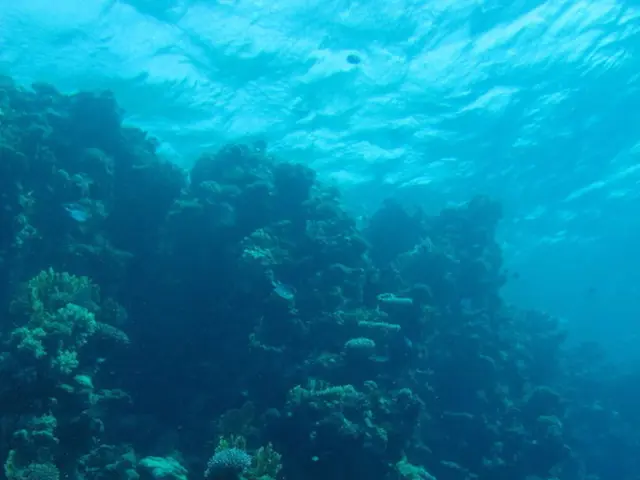Twelve Strategies for Staying Toasty During Winter Camping Trips in Frigid Conditions
Winter camping is an off-season activity that, despite the chill, offers a unique peaceful experience in the woods with no other people around and a higher chance of seeing the Northern Lights. Here's our no-frills guide to winter camping for beginners, offering 13 tips to help you brave the cold and have a successful trip.
- Layer Up: Your base layer should be moisture-wicking Merino wool or synthetic fabric. Wear a warm mid-layer like a fleece pullover. For colder days, toss on a puffy vest or thin jacket. Don't forget accessories like gloves, balaclavas, hats, and thick socks. Swap out wet layers as soon as possible.
- Choose the Right Sleeping Bag: Prioritize a sleeping bag with a lower temperature rating than you anticipate. Mummy-style bags are often best because they offer better heat retention with their tapered design and hood. For extra warmth, consider a down quilt or sleeping bag liner.
- Use Insulated Sleeping Pads: Prevent heat loss by using a high-R value insulated pad. Stacking two pads can enhance warmth and provide extra protection.
- Fuel Up: Winter camping requires energy-dense, high-calorie foods like nut butter, trail mixes, cheese, and energy bars or gels. Don't forget hot beverages and meals, which will not only sustain your energy but also boost morale.
- Stay Hydrated: Drink lots of water, preferably warm or hot water, to stay hydrated. Store your water bottle upside down to prevent freezing, or in an insulated water bottle.
- Check Weather and Avalanche Reports: Stay informed about weather and avalanche conditions by consulting multiple sources. Plan your route and gear according to the predictions. If possible, check updates during your trip.
- Make a Gear Checklist: Make sure you bring everything necessary for your winter camping trip, including a tent, sleeping system, clothing, food, and safety gear. Test your gear beforehand to avoid any last-minute surprises.
- Know the Signs of Hypothermia and Frostbite: Recognize the signs of both hypothermia (uncontrollable shivering, confusion, difficulty speaking, and stumbling) and frostbite (numbness, tingling in exposed skin areas, pale or bluish skin, and extreme coldness to the touch) and act promptly to seek medical attention if they occur.
- Plan Shorter Days: Account for reduced daylight during winter months by planning shorter, focused hiking and setup days, leaving time to enjoy the scenery and the company of others. Have some fun winter camping activities on hand to pass the time.
- Test Your Gear Beforehand: Familiarize yourself with your gear, including setting up your tent, cooking with your stove, and trying out your sleeping system, before your winter camping trip. Practice with different combinations of layers to find the best setup.
- Prepare Your Winter Campsite: Choose a site that is sheltered from the wind but still receives sunlight. Prepare the ground, lay down a ground tarp, and dig out pathways or trenches for walking and cooking.
- Cooking in Winter: Use a reliable winter-specific stove, plan for higher fuel consumption, and cook warm, high-calorie, and high-fat meals.
Bonus Pro Tip: Freeze a non-insulated water bottle, then place it under your sleeping bag before bed for long-lasting, gentle warmth throughout the night.
Staying safe is key to having a successful winter camping experience. Remember to protect yourself from the elements, provide proper insulation, ensure adequate lighting, and prioritize emergency preparedness. With preparation, knowledge, and the right gear, winter camping can be a unique and wonderful adventure.
[1] "8 Tips for Staying Warm When Camping in Cold Weather." All Trails, https://www.alltrails.com/blog/camping/staying-warm-camping-cold-weather
[2] "5 Tips for Cold Weather Camping." American Hiking Society, https://americanhiking.org/Resources/Cold-Weather-Camping/
[3] "How to Stay Warm in a Tent: Usable and Thoughtful Advice." Outdoor Gear Lab, https://outdoorgearlab.com/blogs/news/how-to-stay-warm-in-a-tent
- For a peaceful winter camping adventure, invest in quality gear such as moisture-wicking base layers, warm mid-layers, and insulated sleeping pads to combat the cold.
- Fuel your energy with high-calorie foods like trail mixes, nut butter, and hot beverages while staying hydrated by drinking warm or hot water during your winter camping trip.
- Brush up on outdoor living skills such as winter camping hacks like freezing a non-insulated water bottle for added warmth inside your sleeping bag.
- Plan your winter camping route and gear according to weather and avalanche reports, and always be prepared for potential emergencies.
- Embrace the silence and unique beauty of winter camping, with a higher chance of witnessing the stunning Northern Lights away from the hustle and bustle of the city.
- Stay safe and warm by testing your gear, bundling up in the right clothing, and laying down an insulated sleeping pad to prevent heat loss.
- Document your winter camping experience by capturing the serene landscapes, crackling campfires, and adventure-filled moments in pictures and videos, sharing the lifestyle of outdoor-living with others.
- Regardless of the season, prioritize safety and preparedness, ensuring you have everything necessary for camping, including a tent, sleeping system, food, and safety gear, and understanding the signs of hypothermia and frostbite.







